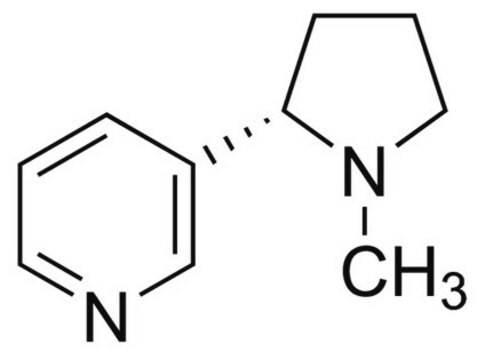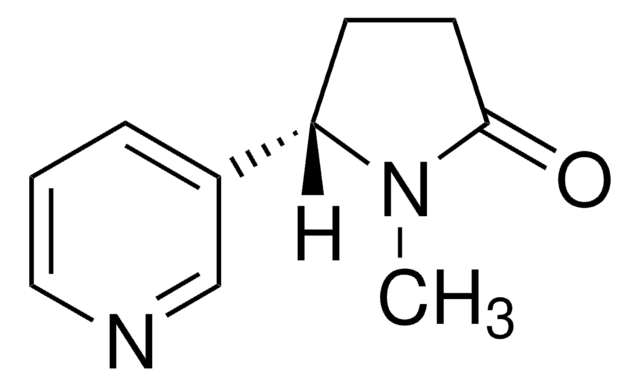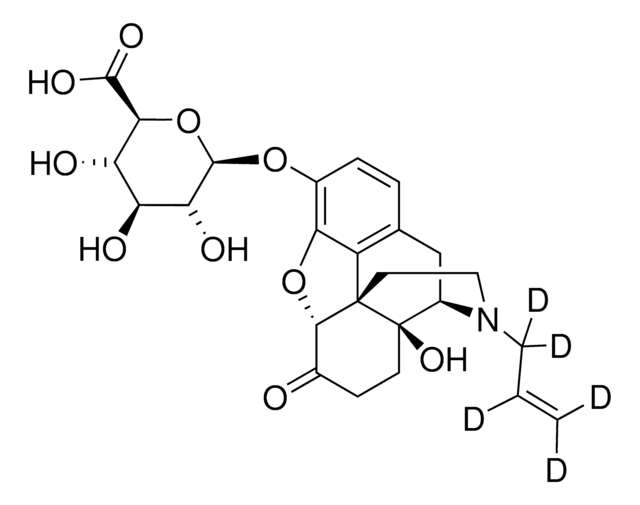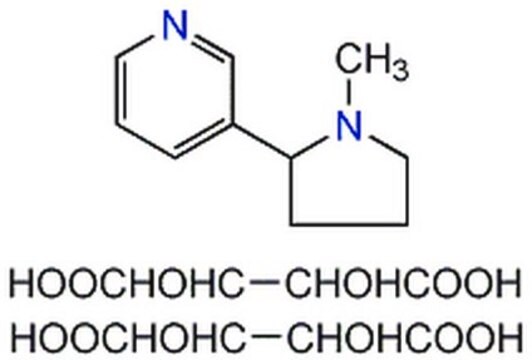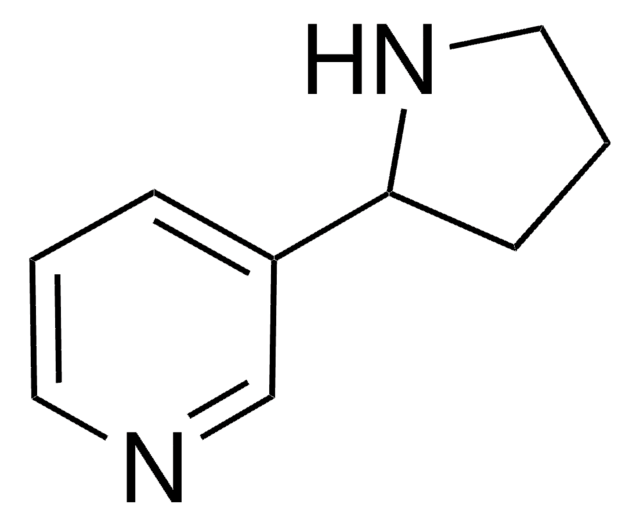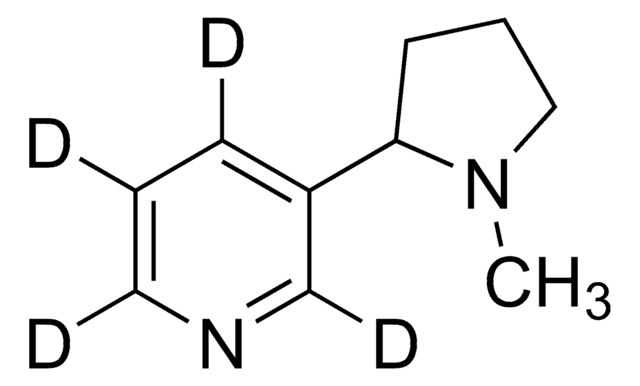Kluczowe dokumenty
N3876
(−)-Nicotine
≥99% (GC), liquid
Synonim(y):
(−)-1-Methyl-2-(3-pyridyl)pyrrolidine, (S)-3-(1-Methyl-2-pyrrolidinyl)pyridine
About This Item
Polecane produkty
Poziom jakości
Próba
≥99% (GC)
Postać
liquid
aktywność optyczna
[α]20/D −169°(lit.)
kolor
yellow
współczynnik refrakcji
n20/D 1.5265 (lit.)
rozpuszczalność
ethanol: 50 mg/mL
gęstość
1.010 g/mL at 20 °C (lit.)
ciąg SMILES
CN1CCC[C@H]1c2cccnc2
InChI
1S/C10H14N2/c1-12-7-3-5-10(12)9-4-2-6-11-8-9/h2,4,6,8,10H,3,5,7H2,1H3/t10-/m0/s1
Klucz InChI
SNICXCGAKADSCV-JTQLQIEISA-N
informacje o genach
human ... CHRNA2(1135) , CHRNA3(1136) , CHRNA4(1137) , CHRNB2(1141) , CHRNB4(1143) , CYP2A6(1548) , KCNH1(3756)
mouse ... Chrna7(11441) , Chrnb1(11443)
rat ... Chrna1(79557) , Chrna2(170945) , Chrna4(25590) , Chrna7(25302) , Chrnb2(54239) , Chrnb4(25103)
Szukasz podobnych produktów? Odwiedź Przewodnik dotyczący porównywania produktów
Opis ogólny
Zastosowanie
- to stimulate neutrophils in extracellular DNA fluorescence assay and in immunostaining of neutrophils
- to study the effects of chronic neonatal nicotine exposure on nicotinic acetylcholine receptor (nAChR) binding, cell death and morphology in hippocampus and cerebellum
- in an in vitro study to evaluate the effect of root exposure to nicotine or cotinine on the morphology and density of fibroblasts
Działania biochem./fizjol.
Uwaga dotycząca przygotowania
Hasło ostrzegawcze
Danger
Zwroty wskazujące rodzaj zagrożenia
Zwroty wskazujące środki ostrożności
Klasyfikacja zagrożeń
Acute Tox. 1 Oral - Acute Tox. 2 Dermal - Acute Tox. 2 Inhalation - Aquatic Chronic 2 - Eye Dam. 1 - Skin Irrit. 2
Kod klasy składowania
6.1A - Combustible acute toxic Cat. 1 and 2 / very toxic hazardous materials
Klasa zagrożenia wodnego (WGK)
WGK 3
Temperatura zapłonu (°F)
213.8 °F - closed cup
Temperatura zapłonu (°C)
101 °C - closed cup
Środki ochrony indywidualnej
Eyeshields, Faceshields, Gloves, type ABEK (EN14387) respirator filter
Certyfikaty analizy (CoA)
Poszukaj Certyfikaty analizy (CoA), wpisując numer partii/serii produktów. Numery serii i partii można znaleźć na etykiecie produktu po słowach „seria” lub „partia”.
Masz już ten produkt?
Dokumenty związane z niedawno zakupionymi produktami zostały zamieszczone w Bibliotece dokumentów.
Klienci oglądali również te produkty
Nasz zespół naukowców ma doświadczenie we wszystkich obszarach badań, w tym w naukach przyrodniczych, materiałoznawstwie, syntezie chemicznej, chromatografii, analityce i wielu innych dziedzinach.
Skontaktuj się z zespołem ds. pomocy technicznej
